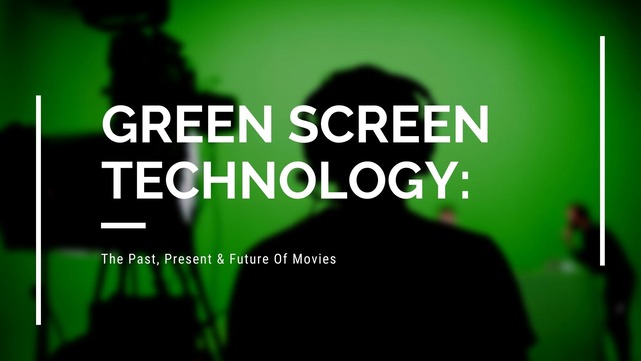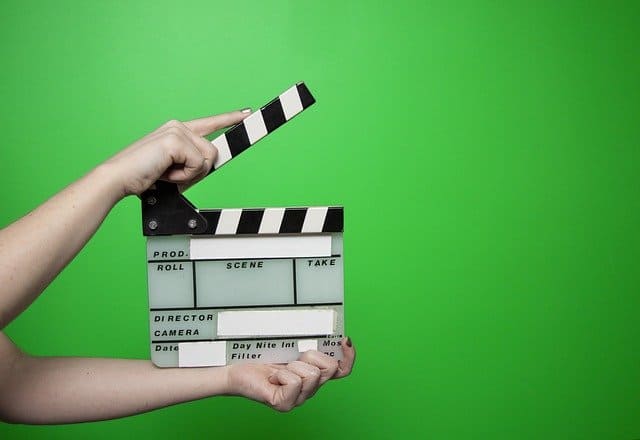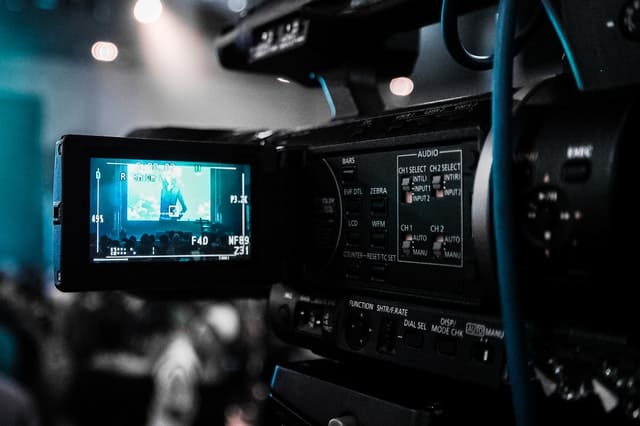Green Screen Technology; The Past, Present and Future Of Movie Magic

In this article, we're going to discuss green screen technology; not only is it the magic behind the biggest films of the last decade, but our green screen hire services are some of the most popular that we provide! That makes us one of the best businesses in the UK to write about the technology that took Hollywood by storm.
So, how did it begin? Where has it been used? What does the future hold? Let’s start from the top.
Explaining green screen
Green screen technology is a process used in the filming of movies, television shows and more where digital elements are added in post-production. In a green screen environment, background scenery and actors are filmed separately. The background scenery is then used as a computer-generated visual effect (CGI) element in post-production to make it appear as if the actors are filmed against this scenery.

For example, an actor may be seen running down a beach whose backdrop is another ocean. The picture of the actor is then superimposed onto CG water. The effect is sometimes called "green screen work" or "blue screen work," for the chroma key process used to create it.
The technology can be used to simulate all sorts of alien landscapes, active backgrounds, exotic buildings; anything the artists behind the computer screens can create. The coloured screen is used to block out all the background elements that are not otherwise included in the scene, so there’s a flat and clean surface to apply visuals to.
A green screen for a virtual world is sometimes created using an LED screen that is not only transparent but can be programmed to display any colour. This enables a simulated landscape and buildings without the need for chroma key painting or compositing. Some software includes an extension that may enable these LED screens to produce realistic-looking shadows and reflections.
The history of green screen technology
One of the first examples of green screen-style technology for special effects was in 1903, in a film called The Great Train Robbery. When an opening scene had to be shot on location, director Edwin Porter would have his actors walk through the scene without film or background after which he would have them walk through again with a background.
In the 1940s, miniature sets leftover from studio films were often reused for television shows which was one example of fake sets and equipment being used to generate the feeling of being elsewhere. This led to actors being placed in front of simple colour backgrounds where they would have otherwise been against a real backdrop. In 1958, Alfred Hitchcock released his film Vertigo with the chroma key technique used to simulate the appearance of San Francisco buildings from different angles.
Moving into the modern age
The technology reached its peak in the 1970s with films like Star Wars: The Empire Strikes Back. In 1982, John Dykstra and Jim Henson used a green screen for the alien landing sequence from E.T. The Extra-Terrestrial. This scene uses a similar technique to draw the attention of the audience to the alien by using a simple image to represent the much more complex live-action scene.

Modifications to digital cameras have enabled chroma key compositing to be done digitally after the fact and streamline a lot of the green screen process while filming and even after. This means that mistakes can easily be fixed or avoided altogether, which means that productions can move at a quick pace without stopping for minor issues; even a small problem on a movie or television studio stage could halt production for days.
The growth of green screen technology has minimised those glitches and become as reliable as it was revolutionary.
Looking into the future
The future, in this sense, is not known; but we fully believe it will continue to be used as a cost-effective and awe-inspiring special effects technique in filmmaking across all sorts of media, from high budget movies to adverts and music videos.
In years and decades time, something more realistic could be achieved using virtual reality technology. However, this is very expensive and may take several years to develop - whereas green screen technology working hand in hand with computer-generated imagery works right now.
So, how did it begin? Where has it been used? What does the future hold? Let’s start from the top.
Explaining green screen
Green screen technology is a process used in the filming of movies, television shows and more where digital elements are added in post-production. In a green screen environment, background scenery and actors are filmed separately. The background scenery is then used as a computer-generated visual effect (CGI) element in post-production to make it appear as if the actors are filmed against this scenery.

For example, an actor may be seen running down a beach whose backdrop is another ocean. The picture of the actor is then superimposed onto CG water. The effect is sometimes called "green screen work" or "blue screen work," for the chroma key process used to create it.
The technology can be used to simulate all sorts of alien landscapes, active backgrounds, exotic buildings; anything the artists behind the computer screens can create. The coloured screen is used to block out all the background elements that are not otherwise included in the scene, so there’s a flat and clean surface to apply visuals to.
A green screen for a virtual world is sometimes created using an LED screen that is not only transparent but can be programmed to display any colour. This enables a simulated landscape and buildings without the need for chroma key painting or compositing. Some software includes an extension that may enable these LED screens to produce realistic-looking shadows and reflections.
The history of green screen technology
One of the first examples of green screen-style technology for special effects was in 1903, in a film called The Great Train Robbery. When an opening scene had to be shot on location, director Edwin Porter would have his actors walk through the scene without film or background after which he would have them walk through again with a background.
In the 1940s, miniature sets leftover from studio films were often reused for television shows which was one example of fake sets and equipment being used to generate the feeling of being elsewhere. This led to actors being placed in front of simple colour backgrounds where they would have otherwise been against a real backdrop. In 1958, Alfred Hitchcock released his film Vertigo with the chroma key technique used to simulate the appearance of San Francisco buildings from different angles.
Moving into the modern age
The technology reached its peak in the 1970s with films like Star Wars: The Empire Strikes Back. In 1982, John Dykstra and Jim Henson used a green screen for the alien landing sequence from E.T. The Extra-Terrestrial. This scene uses a similar technique to draw the attention of the audience to the alien by using a simple image to represent the much more complex live-action scene.

Modifications to digital cameras have enabled chroma key compositing to be done digitally after the fact and streamline a lot of the green screen process while filming and even after. This means that mistakes can easily be fixed or avoided altogether, which means that productions can move at a quick pace without stopping for minor issues; even a small problem on a movie or television studio stage could halt production for days.
The growth of green screen technology has minimised those glitches and become as reliable as it was revolutionary.
Looking into the future
The future, in this sense, is not known; but we fully believe it will continue to be used as a cost-effective and awe-inspiring special effects technique in filmmaking across all sorts of media, from high budget movies to adverts and music videos.
In years and decades time, something more realistic could be achieved using virtual reality technology. However, this is very expensive and may take several years to develop - whereas green screen technology working hand in hand with computer-generated imagery works right now.









